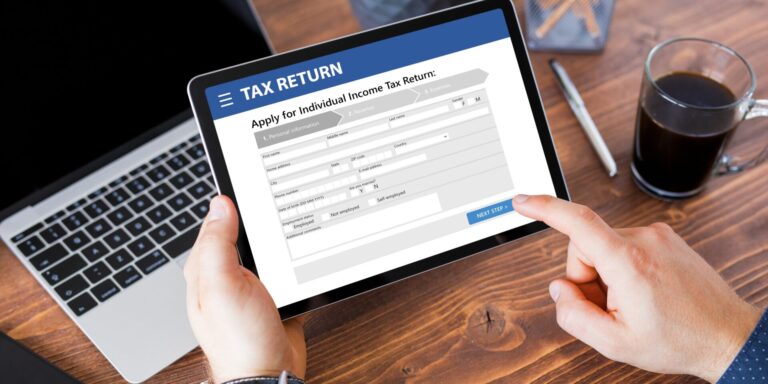Owing money to the ATO can feel overwhelming. But if you can’t pay your tax bill upfront, you’re not without options. The ATO payment plan is one of the most accessible tools available to help individuals and businesses manage their tax debt without spiralling into serious financial trouble.
Whether you’ve received a tax bill you weren’t expecting or are behind on multiple returns, an ATO payment plan can offer a structured, manageable way to repay what you owe – often without harsh penalties, as long as you stick to the agreed terms.
What Is an ATO Payment Plan?
An ATO payment plan is a formal agreement between you (or your business) and the Australian Taxation Office that allows you to pay off your tax debt in instalments over time, rather than in one lump sum. This can apply to personal income tax, business activity statements (BAS), superannuation guarantee charges and more.
The ATO understands that not everyone can pay their debt immediately, especially in times of financial hardship. A payment plan allows you to stay compliant while reducing the risk of penalties, interest and enforcement action.
Who Can Use an ATO Payment Plan?
Most individuals, sole traders and small businesses are eligible to apply for an ATO payment plan, provided they meet certain criteria. These include:
- Having a tax debt under control (or actively working to lodge overdue returns)
- Making an honest attempt to engage with the ATO early
- Agreeing to and maintaining regular repayments
- Keeping up with future tax obligations
The ATO may be more flexible if you demonstrate good compliance history or make the first move to resolve your debt before being contacted.
How to Apply for an ATO Payment Plan
There are two ways to apply for an ATO payment plan:
1. Self-Service (MyGov or Online Services for Business)
For debts under $100,000, individuals and sole traders can often set up a payment plan themselves via their MyGov account or Online Services for Business. You’ll need to:
- Choose a repayment start date
- Nominate an amount and frequency (weekly, fortnightly, monthly)
- Ensure the debt is paid off in full within an acceptable timeframe (usually under 2 years)
2. Direct Negotiation with the ATO
If your debt is large, complex, or involves overdue lodgements, you may need to speak with the ATO directly or work with a tax negotiator. In these cases, you may need to provide:
- Proof of income and expenses
- Cash flow projections
- Business activity statements
- Details of previous repayment history
The ATO assesses your ability to pay and may offer tailored terms or require additional documentation.
What Happens If You Default on a Payment Plan?
One of the biggest risks of an ATO payment plan is defaulting – either by missing a repayment or failing to meet your other tax obligations during the life of the plan.
Defaulting can lead to:
- Immediate cancellation of the plan
- Reinstatement of penalties or additional interest
- Garnishee notices (to your bank, employer, or customers)
- Referral to debt collectors or legal action
- Future difficulty negotiating repayment terms
It’s vital to only agree to a payment plan you can realistically maintain. Overpromising to get the ATO “off your back” may result in a worse financial outcome later.
Will the ATO Still Charge Interest During a Payment Plan?
Yes, the General Interest Charge (GIC) still applies to your outstanding debt while you are on an ATO payment plan. The current GIC rate (as of 2025) is over 11% per annum, compounding daily.
However, entering into a payment plan early can reduce the amount of accrued interest, especially if you demonstrate a proactive effort to manage your obligations. In some hardship cases, you may also be able to request remission of interest, either in full or part.
Tips to Make Your ATO Payment Plan Work
Getting a payment plan approved is only half the battle – keeping it on track is where many taxpayers stumble. Here are several strategies to help ensure your ATO payment plan works in your favour:
1. Don’t Wait for the ATO to Call You
Voluntarily applying for a payment plan before the ATO initiates enforcement action puts you in a much stronger negotiating position.
2. Be Realistic About What You Can Afford
Avoid agreeing to unrealistic instalments that will put you in further financial stress. Missing payments only makes things worse.
3. Keep Up With Future Obligations
The ATO expects you to remain compliant with future tax returns and payments while on a payment plan. Falling behind again can cancel your agreement.
4. Consider Professional Help
If your debt is significant or you’re already in default, a registered tax agent or tax negotiator can help present a better case to the ATO and explore options like remission, compromise, or staged payments.
How Tax Negotiators Can Help
At Tax Negotiators, we work with individuals and businesses across Australia to negotiate fair, manageable ATO payment plans. We don’t just fill out forms – we deal with the ATO on your behalf, identify options you may not be aware of, and help you:
- Understand your true financial position
- Propose a sustainable repayment schedule
- Apply for interest or penalty remission
- Prevent legal or enforcement action
- Rebuild compliance moving forward
If your ATO debt is spiralling or you’ve already missed payments, we’ll step in and handle the conversation – so you don’t have to.
Don’t Let Tax Debt Control You
An ATO payment plan isn’t a get-out-of-jail-free card, but it’s a lifeline that allows you to regain control of your finances. When managed properly, it keeps the ATO at bay, reduces stress and lets you meet your tax obligations without disrupting your livelihood.
The key is acting early, understanding your options and getting help when you need it.
Contact Tax Negotiators today to discuss your situation confidentially – and take the first step toward a debt-free future.



